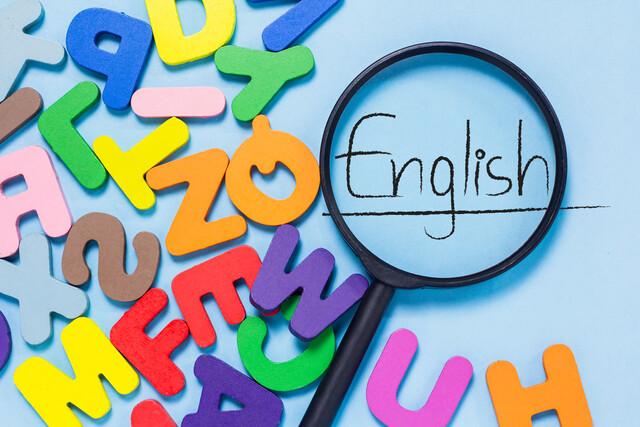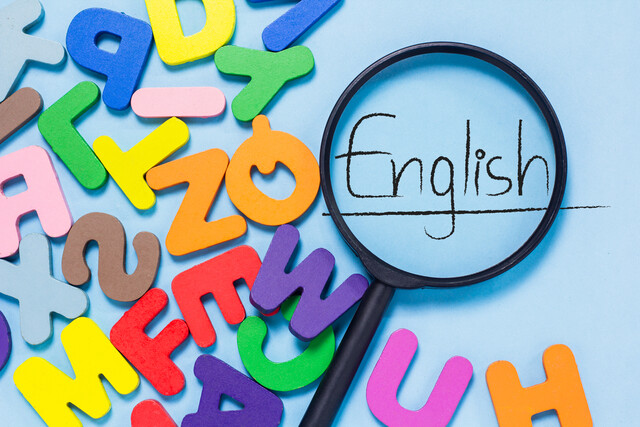Pronunciation can be a problem even for more advanced students. Some students who have mastered grammar can still have big problems being understood because their pronunciation is way off.
For these students, being well-versed in grammar has limited value without the teacher's help in saying words and sentences in a comprehensible way. Specifically we will cover overcorrection, modeling, a technique I call "Talk Like a Cowboy," songs and rhymes, and focus on the pronunciation of "can" versus "can't."
Remember that for students, hearing their teacher saying the words is the first step, and simple repetition is the second. These other techniques are supplementary, but they will help any teacher in the quest to be a truly effective teacher of English.
Modeling
Modeling and repetition is the main key to teaching pronunciation. The new words introduced at the beginning of the lesson should be repeated over and over, first by the teacher, then by the class, many times for each word. Use a call-and-response method.
You say, for example, "executive," and then you indicate for the class to repeat "executive." After this mass-repetition several times, you should go to each individual student, say the word again, and have each individual student repeat. If the student gets it right, move to the next student. If a student has a problem at this stage, repeat several times but not to the point of harassing the student. If you find more than one student is having trouble, go back to step one, the mass repetition, and start over.
Focus on vowel sounds. As a teacher, you have valuable insights into the language that the students do not. It also means that you, as a teacher, must become aware of the little things in English speaking that we often take for granted.
Tiny elements of pronunciation can make the biggest different, even in what we consider the simplest of words, like "cat." A case history from my own experience:
Once a student who was quite a good speaker of English asked me, or so I thought, whether I had a kit. "Do you have a kit?" I said, "Do I have a WHAT?" She replied, "Do you have a kit or a dog or some other pet?"
That was when I realized the importance of the big "A" sound in English words. The student was making the "A" in "cat" very small, to the point where I heard "kit." In fact, we stress or elongate the "A" in words like cat, bat, mat, fat, etc.
Talk like a cowboy
Which leads to another valuable tip for your students: The importance of opening your mouth and slowing down, or what I call the Talk Like a Cowboy technique.
Whether based on their culture, native language, or just their personality, many students simply do not open their mouths very much when speaking English.
And even advanced students do this while also trying to speak very quickly, maybe because they also speak quickly in their native language. I have noticed this particularly with the French and with Asian students, especially those from China.
So I invented the Talk Like a Cowboy technique. I show them how a cowboy talks, then encourage them to try it.
The funny thing is, when they imitate a cowboy, they don't sound like a cowboy, they just sound more understandable. In attempting to capture the cowboy talk, they end up somewhere in the middle between a word-swallowing foreigner and a drawling Texan, and end up just sounding more like a regular speaker of English.
In many cases, they suddenly are speaking with little or no accent.
In all the many times I have tried this, whether with Russians or the French or the Chinese, I have never had any student who accidentally really did sound like a cowboy. So they (fortunately) fail in actually sounding like they're in a corny Western, but they succeed in becoming more understandable, better speakers.
In detail, I ask students whether they have any ideas about how a cowboy, or someone with a stereotypical Texan accent, talks. Whether they do or not, I model it. I pretend I'm John Wayne and I say something like "This is a long and hard trip over the mountains. What do you think about that?" I stretch out the vowels, approximate a drawl.
Sometimes I even have a video clip on John Wayne on hand to show the students. Then I have the student repeat the sentence. Again, it's amazing to see that they never end up sounding like John Wayne, and instead just become much clearer speakers instead. After reinforcing this as needed, I leave them with the advice: Always Talk Like a Cowboy.
Songs and rhymes in the classroom
Like the cowboy technique, the use of songs in the classroom has the ability to make pronunciation problems evaporate. There's something about singing along to the words of a song that can make students forget about their old habits of pronunciation and suddenly speak, or at least sing, free of pronunciation problems.
When using songs in the classroom, focus on songs that have clear lyrics, that are not too noisy, and that reflect whatever grammar or vocabulary you intend to teach that day. Consider songs like "My Girl" by The Temptations, which not only has quite understandable lyrics but can also be used to introduce "to have" versus "to have got."
In Lesson 20, we will cover in detail how to use songs in the classroom.
Speaking of songs, another good technique for any English teacher is the use of rhymes to help pronunciation of difficult-looking words. Many students are used to trying to pronounce all the letters in a word, and so English can be confusing, since pronunciation is not always based on spelling.
For example, one word that has become somewhat universal is "meme." However, the pronunciation is not so universal.
You will hear every pronounced every which way, depending on where the student is from. When I come across this word, usually in a lesson on Internet culture, I simply write on the board: "The team has a meme."
Repeating this sentence serves as a mnemonic device. If they get "the team has a meme" drilled into their minds, they will never forget how to say "meme." So use this technique freely. Come up with your own sentences. And use old standards when necessary, like "the rain in Spain falls mainly on the plane" from the film My Fair Lady.
In your teaching, you will find certain vowel sounds present a recurring problem, but you can use rhymes and the simple-sentence mnemonic in every case.
"Ow" as in "cloud, how, about." Though "how now brown cow" is also well-known, I don't tend to use it because it's not a standard English sentence. I use something like "OW! The cloud is brown."
First I just get the students to say "OW!" which is also fun for them and gets them to relax. Then I have them repeat "Ow, cloud, loud, about, how, now, brown, cow." Then I write some sentences on the board. Maybe "Now the cow is brown and loud."
Pronunciation is a headache and I mean "ache." Many students first learn "to ache" they have no idea how to pronounce it. But many students know the word "headache." So try modelling "You MAKE my head ACHE" or just "you MAKE me ACHE."
When modeling words like "headache," remember that we actually pronounce it more like [HED-DAYK]. When students realize they can combine sounds, and really make "headache" rhyme with "make," it can be a real revelation and a stepping-stone to a more relaxed and confident approach to speaking.
Here are just a few more examples in order to encourage you to think of your own during your teaching.
The pronunciation of the different tenses of "to read" can be a problem. I use the sentences "Today I NEED to READ" and "Yesterday I READ a RED book." Drill your students with those sentences, and they forever remember the right ways to use "to read."
A class on shopping and supermarkets might include the word "aisle." An easy mnemonic-device sentence is "I'LL be in the AISLE." They'll never forget how to say "aisle" if you teach them that sentence.
And then there's the difference between "study" and "student," which can be perplexing for an English learner. But we can overcome the problem by stressing the mnemonic devices of "my study buddy is a new student" [NOO STOOdent].
These techniques work across linguistic barriers. French students, for example, are used to the idea that a group of letters can indicate a single sound, as in the city of Bordeaux being pronounced something like "Bor-doh". But they can still have big problems with pronunciation and the rhyming technique of sentences like "the team has a meme" is very effective for them.
Slavic students are used to pronouncing their V's as W's and vice versa. When they try to say "I love pizza," they will often say "I low pizza." And yet the V-sound certainly exists in all Slavic languages, and all of them know the word vodka and can often pronounce it with a V-sound. So, I get them to say "I love vodka," putting the V-sounds together, whether they do love vodka or not.
Pronunciation of "can" versus "can't"
There's another often-overlooked but vital aspect of pronunciation that is important to teach your students. It is the difference in how to say "can" and "can't" in a sentence. This is especially important because we tend to rely heavily on "can" in English.
Many students, and even some new teachers, think the only difference between "can" and "can't" is the "t" at the end of "can't." It's not.
I first noticed this during my English teaching when a non-native speaker said "I can do it" and I thought I heard "I can't do it." Not because the student didn't pronounce the "t" sound, but because the student made a big "a" sound in "can."
That was when I realized that the "a" sound in an affirmative "can" sentence (that includes the second verb) is both very small and is in fact a different vowel sound than the "a" in "can't."
So let's think about how we say "I can do it" as opposed to "I can't do it."
In the affirmative, "can" sounds more like "ken," as in the name Ken. But the vowel in "can" becomes smaller than in the name. It becomes a little noise, and a second part of the first word "I."
When I teach this difference, I use some homemade phonetic spelling on the board.
Phonetically it might look like this:
[I-ken] do it.
The emphasis in the sentence looks like this, with the bold and capitals emphasizing stress:
I[ken] DO it.
Now let's consider "can't." The "a" sound is big and rhymes with "man." I write on the board
I [kAnt] do it.
While the phonetic illustration helps, it's nothing without the teacher verbally illustrating the difference to supplement the writing it on the board, and then following it up with a lot of further modeling and repetition using other verbs besides "do." For example, "Yes, I can swim. No, I CAN'T swim," etc
Another big help for students is to show them how to open their mouths wider when saying "can't" and showing them the difference in how wide the mouth opens during "I can't do it" as opposed to "I can do it." Then this difference should be illustrated with other verbs as mentioned above. (In the previous lesson on pronunciation we touched on this aspect.)
You can end your presentation by writing on the board and having your student repeat:
I can say "can't"
Note: Again, this is only true for affirmative sentences with the second verb. In "Yes we can," the sound of "can" returns to rhyming with "man" with a big vowel sound, etc.






















